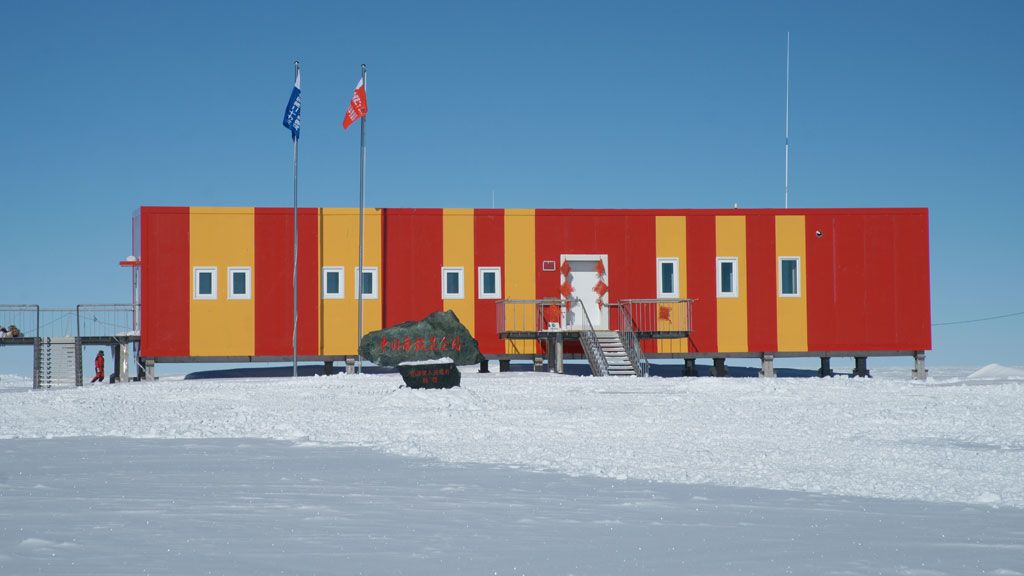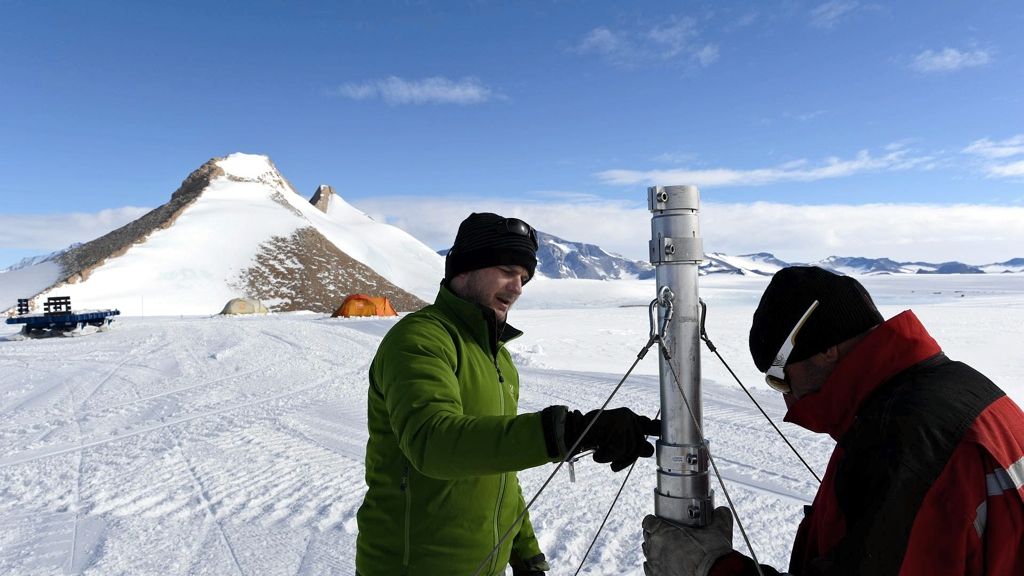Inauguration of Kunlun Station at Dome Argus
Kunlun Station
© PRIC
With the inauguration on Kunlun station at Dome A, it can be said that man has effectively colonized the Earth's last great terrestrial frontier, as well as one of the most remote and inhospitable locations anywhere on Earth.
In the end, the small delegation of representatives from Chinese ministries and the Chinese Oceanic and Atmospheric Administration (SOA), which was due to fly from Zhongshan to Dome A in order to inaugurate Kunlun Station, was prevented from doing so by bad weather and poor visibility. Instead, after five days of waiting, a small "virtual" ceremony was improvised, using satellite links from Dome A to Zhongshan to Beijing: A somewhat surreal reminder, if need be, of just how difficult access to Dome A remains.
Indeed, getting to this stage has been a huge test of perseverance and endurance for everyone involved in CHINARE 25. Back in November and December, as the Xue Long became stuck in unusually thick and snow-laden sea ice some 30 kilometres from Zhongshan Station, and snow storms followed each other in quick succession, it sometimes seemed as if the odds were just too great to overcome. But patience and perseverance ultimately paid off, and Kunlun, named after the Kunlun Mountains located in Western China, now stands as one of the most promising research facilities on Earth for paleo-climatology, atmospheric science, and astronomy.
Making Up for Lost Time
On February 1st, the day of Kunlun Station's "virtual" inauguration, it was exactly 44 days since those left behind on the 25th Chinese National Antarctic Expedition watched the Dome A traverse disappear over the horizon: A slow moving caravan of 11 snow tractors pulling some 40 sledges loaded with food, fuel, living trailers, and materials for the construction of Kunlun station.
Although they had left some ten days behind schedule and then encountered a number of tricky crevasse zones and deep snow fields, in the end, Mr. Li Yuansheng and his team of 28 men reached Dome A in "just" 19 days of traverse (instead of the 25 anticipated), making up a week of lost time in the process.
On their way, they also came across an international support team for the US-lead Antarctic Gamburtsev Province (AGAP), and helped them with their snow tractors to flatten a runway for the Twin Otter aeroplanes carrying out a radar survey of the Gamburtsev Mountain Range buried underneath the ice sheet - a project which has now collected extremely valuable data, and will in turn help Chinese and international paleoclimatologists when it comes to drilling a deep ice core at Dome A.
With everyone still in good health by the time they reached the summit of Dome A at an altitude of 4,094 metres, the team of construction engineers immediately set to work and took just over three weeks to assemble the first phase of the station: A total of 160 m2 of sleeping, eating, and working space largely constituted of ready-made units raised from the surface of the ice sheet on a steel substructure.
To complete this task, the team worked almost round the clock in extremely difficult conditions, including reduced oxygen levels and temperatures that dropped to as low as -44 degrees centigrade. A process which, by the end, has left them physically drained and exhausted, and this even before starting on the long journey back to Zhongshan Station, during which they will also be stopping at regular intervals to carry out a series of scientific experiments.
Just the Beginning
And yet, in many ways, this is just the beginning. Next year, the second phase of construction of Kunlun Station will see the addition of the 70 m2 technical wing, which will include generators, a water treatment plant, a workshop, and storage space. Then will come the deployment of a solar array for power generation, and most importantly, the technical outer structures necessary for ice coring and astronomy.
By the time these are in place, Kunlun will be the Earth's most extreme and remote research facility, and without question one of its most promising in terms of contribution to science and our understanding of the world.





